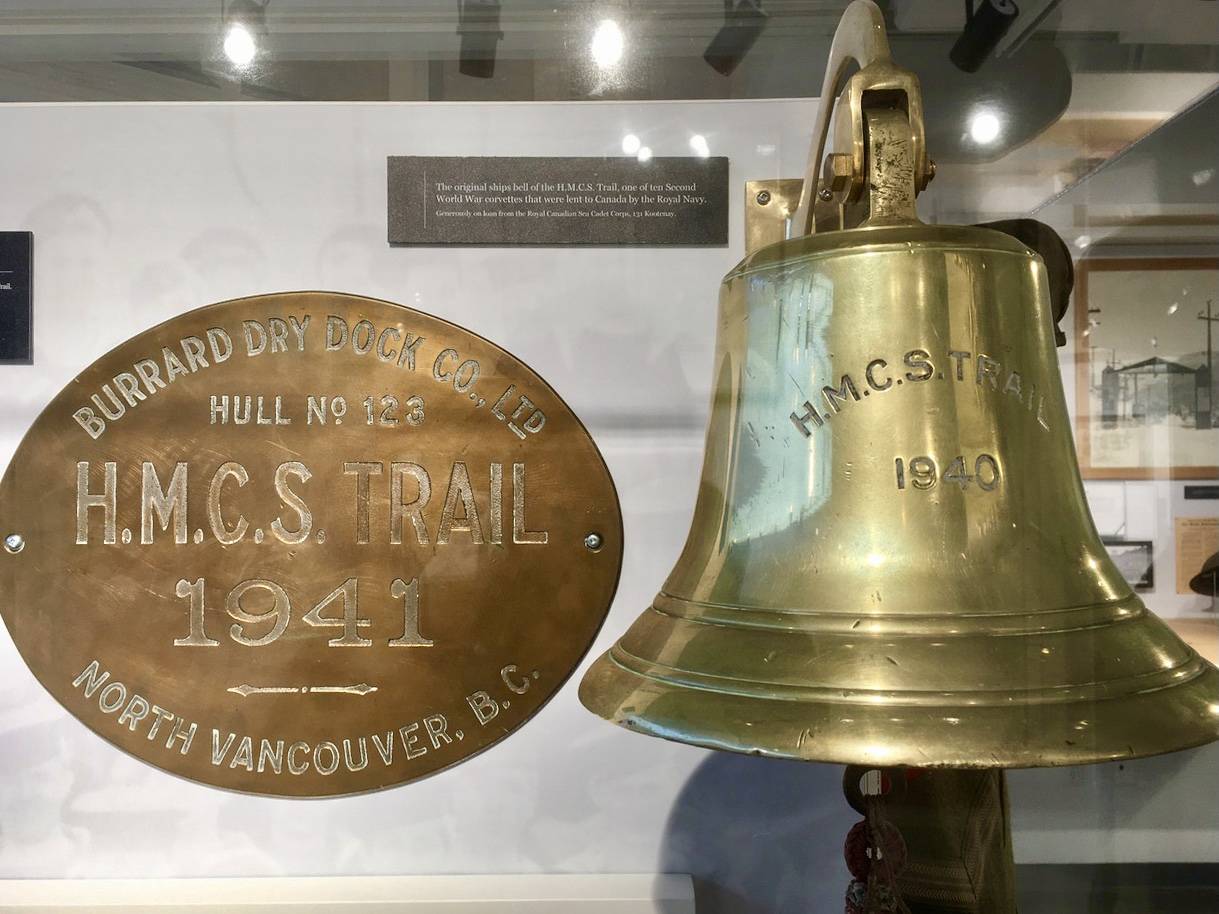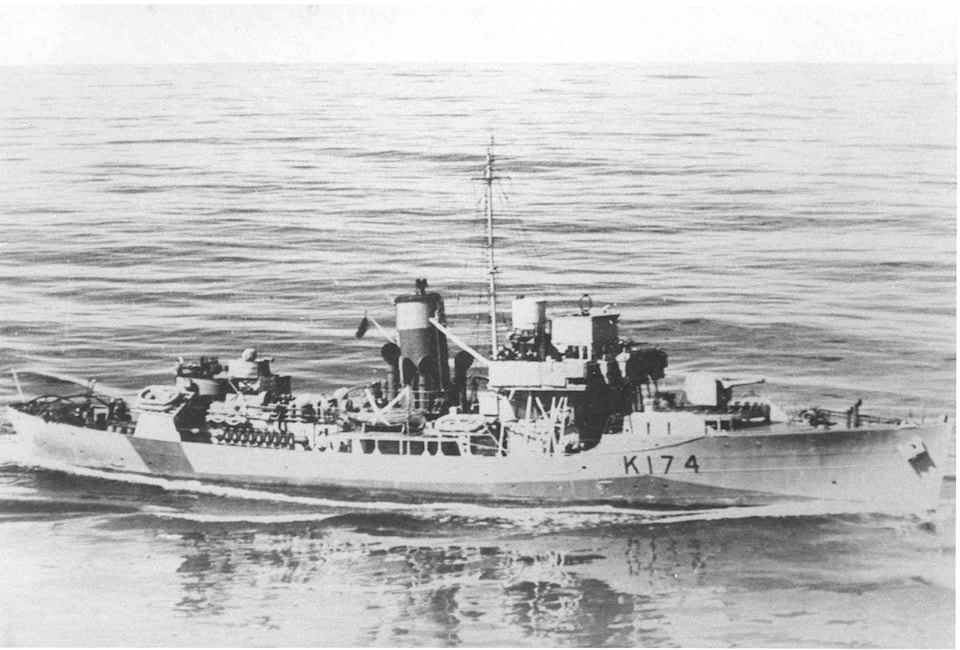While the Trail Times awaits a poem from Garth Paul Ukrainetz, Poet Laureate of the Blackmud Creek, about a Royal Canadian Navy ship called HMCS Trail, the paper contacted the city archives for some history on this wartime vessel that was christened after the City of Trail.
Locals interested in history and interesting artifacts may want to note that the plate and bell from this WWII ship are on display in the museum at the Trail Riverfront Centre.

To start with, “HMCS” stands for Her Majesty’s Canadian Ship, a designation applied as a prefix to surface ships in the Royal Canadian Navy and Canadian Joint Operations Command.
The City of Trail was honoured to have a ship in the corvette Flower-class - HMCS Trail - named after the town during the Second World War. She served primarily in the Battle of the Atlantic as a convoy escort.
HMCS Trail was ordered in February 1940 as part of the 1939–1940 Flower-class building program. She was laid down by Burrard Dry Dock Co. Ltd. at Vancouver, British Columbia and launched Oct. 16, 1940.
Ten of the these types of ships, originally intended for the British Royal Navy, were lent to Canada.
All of the British Royal Navy corvettes bore the names of flowers, but the Canadian ships were all named for Canadian towns and cities: Moncton, Moose Jaw, Oakville, Nanaimo, Lethbridge, and Trail to name a few.
They were formally commissioned as Royal Canadian Navy ships on May 15, 1941.
The corvette, Trail (K‐174) was commissioned at Vancouver on April 30, 1941, sailing from Esquimalt on May 31 for the east coast.
She arrived at Halifax on June 27 and in August, joined the Newfoundland Command, making five trips in the North Atlantic that year.
On Jan. 20, 1942, she left St. John’s to join convoy SC.65 for the first of two round trips to Londonderry, the second largest city in Northern Ireland.
After returning to Halifax on April 2 for a brief refit at Liverpool, N.S., she joined the Halifax Force for northern waters in June.
Between July and November that year, the ship escorted convoys between Labrador and Quebec City, also calling in at Gaspé and Hamilton Inlet.
By November, HMCS Trail was back in Halifax to join the Western Local Escort Force (WLEF) for the balance of the war.
The ship underwent several refits between July 1943 and October 1944, resuming service with the WLEF in January 1945 until July 17.
In 1950, HMCS Trail was sold for scrap and broken up in Hamilton, ON.
Corvettes, which are traditionally the smallest class of vessel considered to be a proper (or “rated”) warship, were designed after a 1936 whalecatcher, Southern Pride.
The Canadian Naval Staff was impressed with them because of their short length, a feature that enabled crews to negotiate the St. Lawrence canal system.
The proposed name for the ships was initially “patrol vessel, whaler type,” but Winston Churchill dubbed the class “corvette” instead.
Read more: Take a tour of the Trail museum
Specifications HMCS Trail:
~ Displacement: 950 tons
~ Overall Length: 205 feet, 1 inch
~ Extreme Breadth: 33 feet, I inch
~ Draught Forward: 8 feet, 3 inches
~ Draught Aft: 13 feet, 5 inches
~ Engines: steam reciprocating, triple expansion, I.H.P. 2800 = 16 knots
~ Boilers: two drum‐type
~ Endurance: 3450 miles at 12 knots
Source: The Ships of Canada’s Naval Forces 1910‐1993 by Ken Macpherson and John Burgess
newsroom@trailtimes.ca
Like us on Facebook and follow us on Twitter
